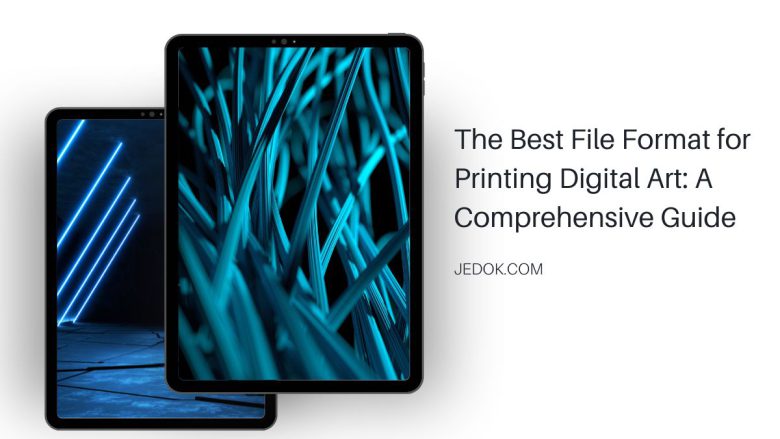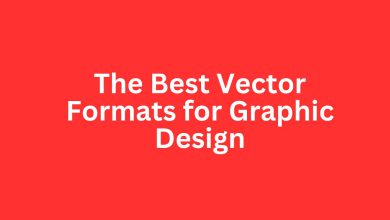
Digital art has revolutionized the way artists create, share, and reproduce their work. When printing digital art, picking the right file format is key. It ensures the highest print quality. This guide will explore the best file formats for printing digital art. It will discuss their pros, cons, and uses. By the end, you will have a clear understanding of which file format suits your needs best.
1. Introduction to Digital Art Printing
Printing digital art involves converting digital files into physical prints. The file format choice can greatly impact print quality, color accuracy, and resolution. The most common file formats used for printing digital art are TIFF, PNG, JPEG, and PDF. Each format has its own set of features, making them suitable for different purposes.
2. Understanding Key Concepts
Before we get into each file format’s details, you must know key concepts about printing digital art:
- Resolution: Measured in dots per inch (DPI), resolution determines the clarity and detail of the print. Higher resolution means more detail.
- Color Mode: Digital files can use different color modes, such as RGB (Red, Green, Blue) for digital screens and CMYK (Cyan, Magenta, Yellow, Key/Black) for printing.
- Compression: Some file formats use compression to reduce file size. Lossy compression reduces quality, while lossless compression maintains original quality.
3. TIFF (Tagged Image File Format)
Advantages:
- Lossless Compression: TIFF files can use lossless compression, ensuring no loss of quality.
- High Resolution: TIFF supports high-resolution images, making it ideal for large prints.
- Color Accuracy: TIFF files retain accurate color information, crucial for professional prints.
Disadvantages:
- Large File Size: TIFF files can be significantly larger than other formats, requiring more storage space.
- Limited Compatibility: Not all software and devices support TIFF files.
Best Use Cases:
- Professional Printing: Preferred by photographers and artists for gallery-quality prints.
- Archival: Ideal for archiving digital artwork due to its high quality and lossless nature.
4. PNG (Portable Network Graphics)
Advantages:
- Lossless Compression: Like TIFF, PNG uses lossless compression, preserving image quality.
- Transparency Support: PNG supports transparent backgrounds, useful for overlaying images.
Disadvantages:
- File Size: PNG files can be large, especially for high-resolution images.
- Limited Color Depth: PNG supports 24-bit color depth, which may be limiting for some professional prints.
Best Use Cases:
- Web Graphics: Ideal for digital artwork used online.
- Smaller Prints: Suitable for smaller prints where high resolution is not as critical.
5. JPEG (Joint Photographic Experts Group)
Advantages:
- Wide Compatibility: JPEG is widely supported across different platforms and devices.
- Small File Size: Uses lossy compression to reduce file size, making it easier to store and share.
Disadvantages:
- Lossy Compression: Quality degrades with each save, making it less suitable for professional prints.
- Limited Detail: Not ideal for large prints where detail is crucial.
Best Use Cases:
- Online Sharing: Great for sharing digital art on social media and websites.
- Casual Printing: Suitable for casual prints and small projects.
6. PDF (Portable Document Format)
Advantages:
- Versatile: Can contain both vector and raster images, making it versatile for different types of digital art.
- High Quality: Supports high-resolution images and precise color management.
- Compact: Can compress images without significant quality loss, balancing quality and file size.
Disadvantages:
- Complexity: Can be more complex to work with, requiring specific software for editing.
- Compatibility Issues: Not all printing services accept PDF files.
Best Use Cases:
- Print-ready Files: Ideal for creating print-ready documents combining text and images.
- Professional Printing: Used in professional printing environments for its versatility and quality.
7. Comparing File Formats
Resolution and Quality:
- Best: TIFF and PDF
- Good: PNG
- Adequate: JPEG
File Size:
- Smallest: JPEG
- Moderate: PDF
- Larger: PNG
- Largest: TIFF
Color Accuracy:
- Best: TIFF and PDF
- Good: PNG
- Adequate: JPEG
8. Practical Tips for Choosing the Right File Format
- Assess Your Needs: Determine whether you need high resolution for large prints or a smaller file size for easier sharing.
- Consider Color Accuracy: For professional prints, prioritize formats that maintain color accuracy.
- Check Printer Requirements: Ensure the printing service you use supports your chosen file format.
- Use High-Resolution Images: Always start with the highest resolution possible to ensure quality prints.
- Experiment and Test: If unsure, test a small print before committing to a large batch.
9. Conclusion
The best file format for printing digital art depends on your needs and your art. TIFF is the gold standard for professional, high-quality prints. PNG offers a balance between quality and file size. JPEG is good for casual prints and online sharing. PDF is versatile for combining text and images in print-ready files. By knowing the strengths and weaknesses of each format, you can make an informed choice. This ensures your digital art looks its best in print.


